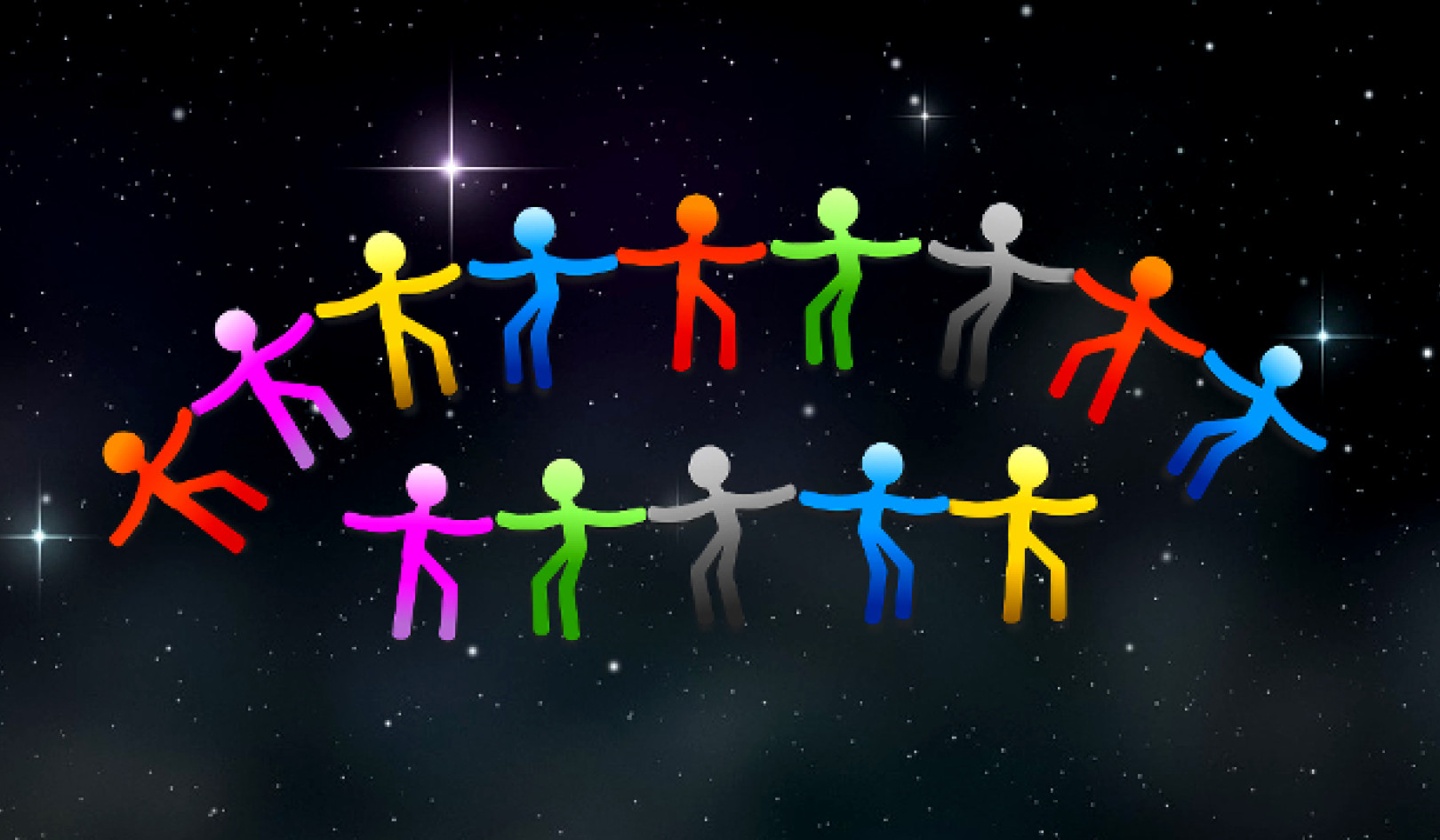
 he meditation for the cultivation of compassion is presented in a slightly different format than for loving-kindness. Whereas loving-kindness practice starts with yourself and then progresses to others, here you begin by bringing to mind a person you know who is suffering adversity, whether physically or mentally.
he meditation for the cultivation of compassion is presented in a slightly different format than for loving-kindness. Whereas loving-kindness practice starts with yourself and then progresses to others, here you begin by bringing to mind a person you know who is suffering adversity, whether physically or mentally.
Bring this person to mind as vividly as possible, and picture the whole situation. Attend to this person and let a yearning arise for this person to be free of suffering and the sources of suffering. Don't start the practice by focusing on a person you dislike, but simply someone who you know is suffering. Then apply this meditation to a dear friend, then a neutral person, and finally, towards a hostile person.
Compassion Meditation: Do Unto Others...
"As for myself, so for others. As I wish to be free of suffering, so do others wish to be free of suffering."
Santideva comments, "I should eliminate the suffering of others because it is suffering, just like my own suffering. I should take care of others because they are sentient beings, just as I am a sentient being."
Whether a specific instance of suffering is my own or others' is not the central point, for in reality suffering has no private, individual owner. Santideva is challenging the notion that your suffering is irrelevant to me, that we are not connected. He continues: "If one thinks that the suffering that belongs to someone is to be warded off by that person himself, then why does the hand protect the foot when the pain of the foot does not belong to the hand?" If your right hand itches, the left hand doesn't just lie there and say, "It's your problem. Scratch yourself."
Community: The Bigger Picture
Not only the human community is relevant here; Buddhists take into account all sentient beings, human and otherwise. So we are part of a community of sentient beings, like a body with organs and limbs and cells. The point is not to ignore our own well being but to gain a bigger perspective on how our well being fits into the greater community. Concern for our own wellbeing doesn't necessarily decrease, it simply fits into a bigger picture.
Even though Buddhaghosa recommends starting this practice by bringing to mind someone who you know is suffering, it may be helpful nevertheless to start with oneself. Look to yourself: Do you have any suffering you want to be free of? Any anxieties, any problems, any sources of distress, physical or mental? Are there any things that you fear? Do you wish you were free of these things? In all likelihood you will say: Yes, I'm very interested in being free of that. Having experienced this yearning to be free of suffering, we can recognize what we are talking about and then bring to mind another person who is suffering. Just as I wish for myself, so may you be free of suffering.
To make the meditation more complete, it is helpful to work with light. This is a prelude to Vajrayana practice, in which visualized light is used a great deal. As you bring to mind a person suffering, and bring forth the desire that he or she be free of suffering, imagine your body saturated with light. Filling your own body with the light of your own buddha-nature, bring to mind the yearning: May you be free of suffering. Then imagine this light extending to the person suffering, and imagine that person being freed from the suffering and its source.
EXTENDING THE MEDITATION ON COMPASSION
Beyond attending to a suffering person, another access to the practice involves attending to someone who is engaged in very harmful action — action dominated by malice, self-centeredness, greed, jealousy, or cruelty. There may very well be some over-lap between the person you choose here and the enemy chosen in the final stage of the cultivation of loving-kindness. In that case, these two practices become seamless, and one begins where the other one ends.
Bring vividly to mind a person who, as far as you can tell, really does engage in very harmful actions, whose mentality is afflicted with qualities such as malice, jealousy, spite, or selfishness. What is it that makes this person appear so vile? It could be his behavior, disposition, certain mental traits that we surmise dominate him. Don't turn from those qualities that are so abhorrent that they may provoke sadness, rage, or resentment.
Feel the Pain...
Then briefly bring your awareness back to yourself and imagine what it would be like if you yourself were afflicted with a similar disposition, similar habits of behavior. You may sense your horizons shutting down, your world growing smaller, your heart becoming contorted. You may sense the pain and anxiety that ensue from such affliction. Yearn to be free of these afflictions of the mind, unencumbered by such behavioral tendencies. Restore yourself to light and imagine being utterly free of them. Once again, sense the spaciousness, the lightness, the buoyancy, the soothing calm of freedom from those afflictions.
Turn your awareness back to the same person, and let the yearning arise, "Just as I wish to be free of such afflictions and harmful behavior, may you also be free." Look to the person who is afflicted, without equating the person with the temporary afflictions of personality and behavioral patterns. Look to the person, who, like yourself, simply yearns for happiness, and wishes to be free of suffering. Let your own desires fuse with those of this person: "May you indeed be free of suffering. May you find the rich happiness and wellbeing that you seek. May all the sources of unhappiness and conflict fall away. May you be free of suffering and its sources."
Like the sun appearing through a break in the clouds, like a blossom bursting forth from dark soil, imagine this person emerging from the suffering and from the sources of suffering that you find so repugnant. Imagine this person as vividly as you can, free of those sources of suffering. Now expand the scope of this compassion to all sentient beings in each of the four corners, attending first to the reality that each one essentially wishes to be free of suffering. It is this yearning that accounts for such diverse behavior, some of it wholesome, some of it terribly injurious. Let your heart be joined with their essential yearning. "May you indeed be free of suffering, just as I myself wish to be free of suffering." Let your body fill with light and send it out to each of the four quarters. Imagine sentient beings in each of these regions emerging from suffering and the source of suffering.
INTRUSIVENESS IN THE PRACTICE OF COMPASSION
The question of intrusiveness can be raised regarding this practice: What right do I have to impose my views and desires on another person's life? The question is valid, and the practice must encompass a respect for the other person's wishes. But in attending to a person who is suffering, we can ask ourselves whether this person wishes to suffer. Does this person delight in, or take nourishment from his or her suffering, whether caused by mental or physical afflictions? If the answer sincerely is no, then we can send out our wishes of compassion and kindness without reservation: May your own yearning to be free of suffering, and the sources of suffering, be fulfilled.
I take this very seriously. I don't want to be interfering in people's lives, neither as a teacher nor psychically, in imagination. It is inappropriate. But if I focus on other people's own wish to be free of suffering, then I feel there is no imposition as long as my own wish supports theirs. Objectively, what are the odds that my meditation is going to bring about some major shift in another person's life? Not great at all. But that's not the chief point of the practice.
Overcoming Malice & Cruelty in Our Own Mind
The purpose of the practice is to overcome any type of malice or cruelty in our own minds, and to transform our minds so that compassion or kindness arises without impediment. What are the chances of such a practice decreasing any inclination towards cruelty, and nurturing tendencies of kindness and compassion? The odds are very good.
Reprinted with permission of the publisher, Snow Lion Publications.
©1999. www.snowlionpub.com
This article was excerpted from:
The Four Immeasurables: Cultivating a Boundless Heart
by B. Alan Wallace.
 This book is a rich suite of practices that open the heart, counter the distortions in our relationships to ourselves, and deepen our relationships to others. Alan Wallace presents a unique interweaving of teachings on the Four Immeasurables (the cultivation of loving-kindness, compassion, equanimity, and empathetic joy) with instruction on quiescence or shamatha meditation practices to empower the mind and render it "fit for service." The book includes both guided meditations and lively discussions on the implications of these teachings for our own lives.
This book is a rich suite of practices that open the heart, counter the distortions in our relationships to ourselves, and deepen our relationships to others. Alan Wallace presents a unique interweaving of teachings on the Four Immeasurables (the cultivation of loving-kindness, compassion, equanimity, and empathetic joy) with instruction on quiescence or shamatha meditation practices to empower the mind and render it "fit for service." The book includes both guided meditations and lively discussions on the implications of these teachings for our own lives.
Info/Order this book
About the Author
 B. Alan Wallace, Ph.D., is a lecturer and one of the most prolific writers and translators of Tibetan Buddhism in the West. Dr. Wallace, a scholar and practitioner of Buddhism since 1970, has taught Buddhist theory and meditation throughout Europe and America since 1976. Having devoted fourteen years to training as a Tibetan Buddhist monk, ordained by H. H. the Dalai Lama, he went on to earn an undergraduate degree in physics and the philosophy of science at Amherst College and a doctorate in religious studies at Stanford. He is the author of numerous books including A Guide to the Bodhisattva Way of Life, Buddhism with an Attitude, The Four Immeasurables, Choosing Reality, Consciousness at the Crossroads. and Buddhism and Science.
B. Alan Wallace, Ph.D., is a lecturer and one of the most prolific writers and translators of Tibetan Buddhism in the West. Dr. Wallace, a scholar and practitioner of Buddhism since 1970, has taught Buddhist theory and meditation throughout Europe and America since 1976. Having devoted fourteen years to training as a Tibetan Buddhist monk, ordained by H. H. the Dalai Lama, he went on to earn an undergraduate degree in physics and the philosophy of science at Amherst College and a doctorate in religious studies at Stanford. He is the author of numerous books including A Guide to the Bodhisattva Way of Life, Buddhism with an Attitude, The Four Immeasurables, Choosing Reality, Consciousness at the Crossroads. and Buddhism and Science.





























